THE ASPHALT JUNGLE
The Asphalt Jungle is a film noir masterpiece released in 1950, directed by John Huston and starring Sterling Hayden, Louis Calhern, and Jean Hagen. It is a heist film that tells the story of a group of criminals planning and executing a major jewelry store robbery in a big city. However, their plan goes awry, and they face a series of complications that lead to betrayal, violence, and ultimately, their downfall.
The film is known for its realistic portrayal of criminal life and the intricate planning that goes into a heist. It also explores the complex relationships between the characters, including the tough-talking ringleader, the corrupt lawyer, and the conflicted safecracker. “The Asphalt Jungle” was groundbreaking in its depiction of crime and the human condition and has since become a classic of the genre. It has been praised for its direction, performances, and screenplay and is a must-see for fans of film noir and crime dramas.
PLOT
“The Asphalt Jungle” is tells the story of a group of criminals attempting to pull off a major heist.
The film opens with Doc Riedenschneider (Sam Jaffe), a seasoned criminal who has just been released from prison, meeting with the wealthy lawyer Alonzo D. Emmerich (Louis Calhern) to propose a heist. Riedenschneider has a foolproof plan to rob a jewelry store and needs Emmerich to finance the operation. Emmerich, who is facing financial difficulties, agrees to provide the money and assembles a team of criminals to carry out the heist.
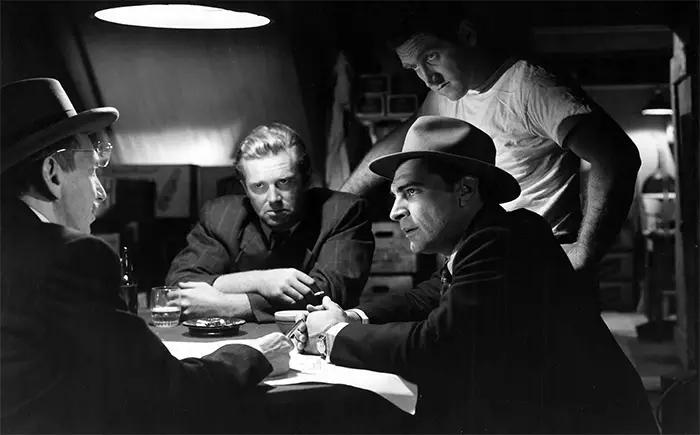
The team consists of Dix Handley (Sterling Hayden), a tough ex-con who is assigned to drive the getaway car; Louis Ciavelli (Anthony Caruso), a safecracker who is released from prison to participate in the robbery; Gus Minissi (James Whitmore), a hunchbacked driver with a penchant for animals; and “Doll” Conovan (Jean Hagen), a young woman with a gambling problem who is tasked with distracting the jewelry store’s night watchman.
The heist is meticulously planned, and the team spends months preparing for it. However, when the robbery finally takes place, things start to go wrong. Doll’s distraction of the night watchman is not as effective as expected, and he is able to raise the alarm before being knocked unconscious. The police are soon on the scene, and the criminals are forced to flee.
Despite their escape, the criminals quickly discover that they are not in the clear. The police are closing in, and each member of the team is grappling with their own personal demons. Dix, who had planned to use his share of the money to start a new life with his lover, becomes increasingly desperate as he realizes that he may never get his hands on the cash. Meanwhile, Ciavelli, who had initially seemed unflappable, begins to crack under the pressure of the situation.

As the net tightens around them, the criminals begin to turn on each other. Emmerich, who had been playing both sides of the law, betrays the team and attempts to flee with the money. However, he is caught by the police and forced to reveal the location of the loot. Dix, who had been on the run, returns to the city to try and retrieve the money but is captured by the police and killed in a shootout. The surviving members of the team are either arrested or killed, and the heist ends in disaster.
One of the standout aspects of “The Asphalt Jungle” is its portrayal of the criminal underworld. The film presents a gritty and realistic depiction of the lives of the characters, highlighting their flaws and weaknesses. There are no heroes in this story, only flawed individuals trying to make a living on the wrong side of the law.
Another strength of the film is its nuanced exploration of the relationships between the characters. Each member of the team is given their own backstory and motivations, and the film takes care to explore the complex dynamics between them. Dix, for example, is initially presented as a tough and unfeeling criminal, but as the story progresses, we learn that he has a softer side and is motivated by love rather than greed.
RECEPTION
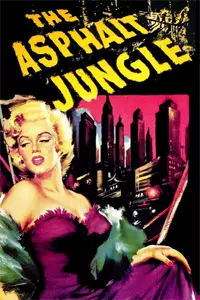 When “The Asphalt Jungle” was first released in 1950, it received positive reviews from critics and was a commercial success. The film was praised for its gritty realism, strong performances, and complex characters.
When “The Asphalt Jungle” was first released in 1950, it received positive reviews from critics and was a commercial success. The film was praised for its gritty realism, strong performances, and complex characters.
The New York Times called the film “a tense, exciting, and authentic melodrama,” and praised the performances of the cast, particularly Sterling Hayden as Dix and Sam Jaffe as Doc. The review also noted the film’s “well-plotted, suspenseful action” and its “remarkably lifelike quality.”
Variety also gave the film a positive review, calling it “an engrossing crime melodrama” and praising the film’s “tightly-woven plot.” The review noted the film’s “unusual depth of characterization” and its “skillful direction” by John Huston.
The film was also praised for its cinematography by Harold Rosson, who created a moody, atmospheric look for the film. The use of low angles and shadows created a sense of tension and danger, while the gritty, urban setting added to the film’s realism.
Despite the positive reviews, “The Asphalt Jungle” also generated controversy. Some critics and audiences were uncomfortable with the sympathetic portrayal of criminals and the film’s suggestion that poverty and desperation could drive people to a life of crime. The film’s frank depiction of violence and its portrayal of corrupt police officers also raised eyebrows.
Despite the controversy, “The Asphalt Jungle” was a commercial success, earning over $4 million at the box office and becoming one of the top-grossing films of 1950. The film’s success helped to establish the careers of both John Huston and Sterling Hayden, and it has since become regarded as a classic of the film noir genre.
JOHN HUSTON'S DIRECTION
John Huston’s direction of “The Asphalt Jungle” is widely regarded as one of the film’s greatest strengths. Huston’s approach to the film was both innovative and groundbreaking, and his direction helped to establish many of the conventions of the film noir genre.
One of Huston’s greatest strengths as a director is his ability to create atmosphere and mood. In “The Asphalt Jungle,” Huston uses light and shadow to create a sense of darkness and desperation that permeates the film. His use of close-ups and tight framing also helps to create a sense of claustrophobia, which adds to the film’s tension and suspense.
Huston’s approach to the film’s characters is also noteworthy. Rather than portraying them as stereotypical criminals, Huston imbues them with a sense of humanity and complexity. The film’s characters are motivated by a variety of factors, including desperation, greed, and loyalty, and Huston allows the audience to sympathize with them even as they engage in criminal activity.
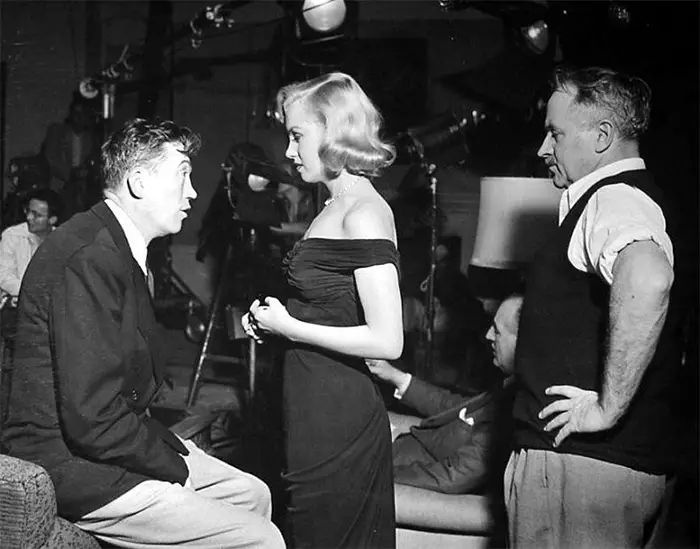
Huston’s direction also extends to the film’s pacing and structure. The film’s heist scene, which takes up a significant portion of the film, is a masterclass in tension and suspense. Huston expertly builds the tension as the characters prepare for the heist, and the scene itself is a triumph of editing and cinematography.
VISUAL LANGUAGE
The visual language of “The Asphalt Jungle” is an integral part of the film’s success and has had a lasting impact on the crime genre. Director John Huston and cinematographer Harold Rosson utilized a variety of techniques to create a visual style that emphasized the bleak and oppressive world of the film’s criminal underworld.
One of the most significant elements of the film’s visual language is its use of lighting. The film is shot primarily in low-key lighting, which emphasizes the shadows and creates a sense of darkness and foreboding. The chiaroscuro lighting creates a sense of depth and texture, and highlights the complexity of the characters’ motivations and actions.
Another important aspect of the visual language is the use of composition. Huston and Rosson used a variety of framing techniques to create a sense of claustrophobia and isolation. Many of the scenes are shot in tight close-ups, emphasizing the characters’ emotions and actions. This technique creates a sense of intimacy with the characters, making the audience feel as though they are in the midst of the action.
In addition to lighting and composition, the film’s visual language also includes the use of location shooting. “The Asphalt Jungle” was one of the first films to extensively use location shooting, and Huston and Rosson utilized the streets of Los Angeles to create a sense of realism and authenticity. This technique adds to the sense of grittiness and desperation that permeates the film.
The film’s visual language also includes the use of symbolism and metaphor. For example, the character of Dix (played by Sterling Hayden) is associated with horses, which symbolize his desire for freedom and his inability to escape his criminal past. The use of symbolism adds depth and complexity to the film’s characters and themes.
MARILYN MONROE
Marilyn Monroe’s role in “The Asphalt Jungle” may have been small, but it was a significant one and helped to launch her career as a Hollywood icon. Monroe plays Angela Phinlay, the young mistress of Emmerich (Louis Calhern), a wealthy lawyer who is involved in the heist planned by the film’s main characters.
Monroe’s performance as Angela was notable for its sensuality and vulnerability. She exuded a sultry charm that was both captivating and dangerous, and her character’s desperation to escape her situation was palpable. Despite having only a few minutes of screen time, Monroe left a lasting impression on audiences and critics alike.

Monroe’s presence in “The Asphalt Jungle” helped to establish her as a rising star in Hollywood. She had previously appeared in small roles in a few films, but her performance in this film caught the attention of critics and industry insiders. Soon after, she was signed to a contract with 20th Century Fox and began her ascent to becoming one of the most iconic actresses of all time.
Monroe’s role in “The Asphalt Jungle” also helped to establish her image as a sex symbol. Her form-fitting dresses and flirtatious demeanor made her a standout among the film’s other characters, and her brief scene with Sterling Hayden’s character, Dix, has become one of the film’s most memorable moments. Monroe’s combination of sex appeal and vulnerability would become a trademark of her career and helped to establish her as a symbol of female desire.
THEMES
The film explores a number of themes that are common to the genre. Here is a more detailed breakdown of some of the major themes:
Greed and Desperation
One of the most prominent themes in “The Asphalt Jungle” is the characters’ greed and desperation. The film follows a group of criminals who come together to pull off a jewelry heist, each member driven by a desire for money. The characters are willing to risk everything to get what they want, but their desperation ultimately leads to their downfall. The film shows how greed and desperation can cloud judgment and lead to poor decision-making.
Betrayal and Corruption
Another major theme in the film is betrayal and corruption. The characters are constantly double-crossing each other and making deals behind each other’s backs. This sense of betrayal extends beyond the criminal underworld and into the legal system, with even the wealthy lawyer Emmerich being shown to be corrupt. The film highlights how corruption can be pervasive and how it can impact both the criminal and legal worlds.
Fatalism and Determinism
“The Asphalt Jungle” is also a film that explores the themes of fatalism and determinism. The characters are trapped in a cycle of crime and violence, and their fates seem to be predetermined. No matter how hard they try to escape their circumstances, they are ultimately doomed to fail. The film shows how the characters’ choices are limited by their environment and their past experiences, and how this can lead to a sense of fatalism.
Alienation and Loneliness
The characters in “The Asphalt Jungle” are all alienated and lonely, despite being part of a criminal gang. They are isolated from society and from each other, and this sense of isolation contributes to their desperation and vulnerability. The film shows how loneliness can lead to poor decision-making and how it can contribute to a sense of hopelessness.
Gender and Power
The film also explores gender and power dynamics, particularly in the character of Doll. She is a young woman who is used as a pawn by the male characters, and her vulnerability is exploited throughout the film. This is a common theme in film noir, where women are often depicted as powerless and objectified. The film highlights how gender can impact power dynamics and how women can be victimized in male-dominated environments.
Realism and Social Critique
Finally, “The Asphalt Jungle” can be seen as a social critique of post-war America. The film presents a realistic portrayal of the criminal underworld and shows how poverty and desperation can lead people to a life of crime. It also highlights the corruption and inequality in American society, particularly in the legal system. The film is a commentary on the darker aspects of American society and how they can impact individuals.
“The Asphalt Jungle” is a complex and nuanced film that explores a range of themes. It offers insights into the human condition and the darker aspects of society, and it challenges viewers to consider the impact of greed, corruption, and power dynamics. The film’s exploration of these themes has made it a classic of the film noir genre, and it continues to be a powerful and relevant work of cinema.
POPULAR CULTURE
“The Asphalt Jungle” has had a significant impact on pop culture since its release in 1950. The film’s themes of crime, corruption, and desperation have been explored and referenced in numerous works of film, television, and literature.
One of the most significant impacts of “The Asphalt Jungle” on pop culture has been its influence on the crime genre in film and television. The film helped to establish the conventions of film noir, including its use of dark lighting, shadowy characters, and a cynical outlook on society. The film’s success paved the way for other crime films of the era, including “The Killing” and “The Godfather,” which would go on to become classics of the genre.
The film’s impact can also be seen in more recent works of popular culture. The TV series “Breaking Bad” has been compared to “The Asphalt Jungle” for its exploration of the criminal underworld and the desperation that drives its characters. The film “Heat” has been described as a modern-day version of “The Asphalt Jungle,” with its depiction of a meticulously planned heist and the various characters who become involved.
The film’s impact can also be seen in literature. The novel “The Friends of Eddie Coyle” by George V. Higgins has been compared to “The Asphalt Jungle” for its portrayal of the criminal underworld and the characters who inhabit it. The novel “The Road” by Cormac McCarthy has been described as a modern-day version of “The Asphalt Jungle,” with its exploration of desperation and the lengths people will go to survive.
“The Asphalt Jungle” also had an impact on the careers of several of its cast members. Sterling Hayden, who played Dix, went on to appear in numerous other films, including “The Killing” and “Dr. Strangelove.” Marilyn Monroe, who had a small but significant role in the film, went on to become one of the most iconic actresses of all time.
In addition to its impact on the crime genre, “The Asphalt Jungle” has also had a significant impact on the world of fashion. Monroe’s form-fitting dresses and glamorous style helped to establish her as a fashion icon, and her influence can be seen in the designs of numerous fashion designers over the years.
Explore more Film Noir
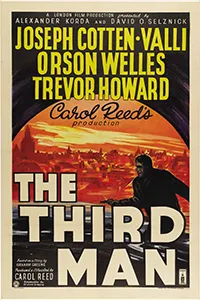
Classic film noir set in post-WWII Vienna, where a writer investigates the mysterious death of his friend.
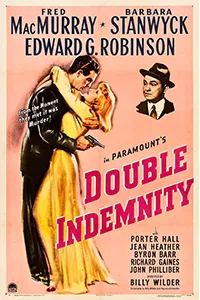
A gripping film noir about a seductive woman who convinces an insurance salesman to plot a murder.

This classic film noir follows private detective Philip Marlowe as he investigates a complex case involving a wealthy family.
